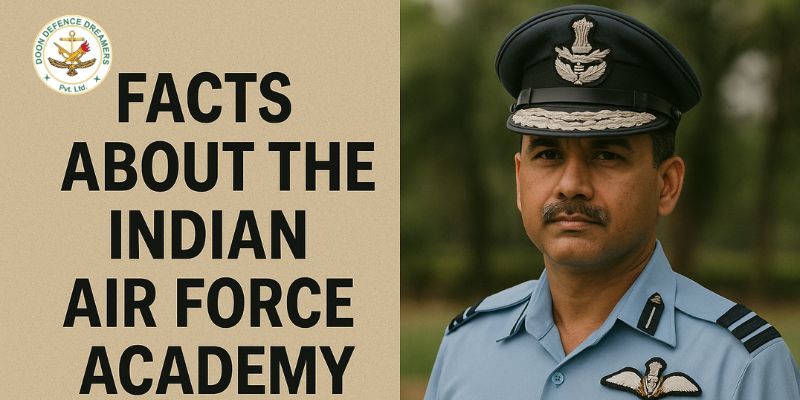The Indian Air Force Academy (IAFA), located in Dundigal near Hyderabad, is one of India’s most prestigious defense institutions. Since its establishment in 1971, it has served as the cradle of Air Warriors, transforming young cadets into commissioned officers of the Indian Air Force. With a legacy of discipline, sacrifice, and excellence, the academy symbolizes India’s strength in the skies. Below are 20 remarkable facts about this premier institution.
1. The Cradle of Air Warriors
The IAFA is the primary training establishment for future officers of the Indian Air Force. Here, cadets destined for different branches—flying, technical, and ground duties—are trained under one roof. The academy unites men and women from diverse backgrounds and molds them into leaders who uphold the values of integrity, courage, and service. By the time they graduate, cadets carry the confidence, skills, and resilience to lead India’s air power.
2. Location and Foundation
Situated at Dundigal, about 25 kilometers from Hyderabad, the academy was formally inaugurated in 1971. Its location was chosen with foresight—it provides ample open space for airstrips and training, while also being close to urban infrastructure. Since its foundation, it has grown into one of Asia’s most advanced military academies, reflecting India’s focus on building a world-class Air Force.
3. Spread Across 7,000 Acres
The academy’s massive campus, spanning 7,000 acres, mirrors the vast horizons that future pilots will conquer. Within these grounds, cadets have access to state-of-the-art training facilities, airstrips, classrooms, sports arenas, and residential quarters. The scale of the campus instills a sense of expansiveness in every cadet—reminding them that the sky is limitless and so are their responsibilities.
4. Motto: “Shram Se Siddhi”
The academy’s motto, “Shram Se Siddhi”—meaning Achievement through Effort—captures the essence of military life. Every cadet learns that success in the Air Force comes not from shortcuts but through relentless effort, discipline, and perseverance. This guiding principle is reflected in every obstacle course, drill, and flying lesson, reminding officers that true victory is earned only through hard work.
5. Diverse Training Programs
The IAFA provides training for all branches of the Air Force. Flying cadets master aviation skills, technical cadets focus on aircraft systems and engineering, while ground duty cadets train in administration, logistics, and meteorology. The training is holistic—it develops physical strength, academic knowledge, leadership ability, and moral responsibility, ensuring that officers are complete professionals.
6. Flying Training
Flying training forms the heart of the academy. Cadets start with basic trainers like the Pilatus PC-7 Mk II, progress to intermediate trainers such as the Kiran, and then move to advanced aircraft like the Hawk AJT. This step-by-step exposure prepares them for operational fighter jets like the Sukhoi-30MKI, Mirage-2000, and Rafale. By the time they graduate, flying cadets are combat-ready aviators.
7. Joint Services Training
Before specialization, cadets undergo joint services training alongside their counterparts from the Army and Navy. This builds camaraderie, inter-service respect, and leadership skills. Shared drills and exercises remind cadets that defense is not about individual branches but about the armed forces working together as one cohesive unit to defend the nation.
8. The Parade Grounds
The parade ground at Dundigal is iconic. It is here that cadets perfect their drills, march in ceremonies, and demonstrate discipline during official parades. The ground becomes the stage for the Passing Out Parade (POP)—a moment when cadets transform into commissioned officers, watched proudly by their families and seniors. The sight of synchronized marching against the backdrop of aircraft remains unforgettable.
9. The Passing Out Parade (POP)
The POP is the academy’s most celebrated event. It is not just a graduation ceremony but a national spectacle where cadets earn their commissions as officers. Attended by dignitaries, Air Chiefs, and family members, the parade represents the culmination of years of sweat, sacrifice, and training. For every cadet, the day marks the transition from trainee to guardian of India’s skies.
10. Hawk Advanced Jet Trainers
Among the most exciting experiences for cadets is flying the Hawk Advanced Jet Trainers (AJTs). These aircraft bridge the gap between training and combat flying, preparing cadets to handle supersonic fighters. With their advanced avionics and maneuvering capabilities, Hawks give cadets a taste of the challenges they will face in frontline fighters.
11. Exposure to Combat Training
The academy goes beyond flying basics. Cadets are taught combat maneuvers, survival strategies, and aviation tactics to prepare them for wartime conditions. They also undergo survival training in jungles, deserts, and mountains, learning to adapt and endure in extreme conditions. This ensures they are ready to serve not just as pilots but as warriors.
12. Women in the Academy
The IAFA has been a pioneer in opening its doors to women. Since the early 1990s, women have been trained here as pilots, navigators, and ground duty officers. Today, women officers fly transport planes, helicopters, and fighter aircraft, standing shoulder to shoulder with men in the defense of the nation. Their presence at Dundigal reflects India’s progress toward inclusivity in the armed forces.
13. Distinguished Alumni
Over the years, the academy has produced some of India’s finest Air Warriors. Many have risen to become Chiefs of Air Staff, while others have been decorated in war and peace. One of its most famous alumni is Rakesh Sharma, India’s first astronaut, who carried the academy’s spirit into space. These alumni prove the academy’s role in shaping history.
14. Focus on Physical Fitness
Cadets at Dundigal are trained to be in peak physical condition. Rigorous obstacle courses, endurance runs, swimming, and sports are part of daily life. Physical training builds not just stamina but also resilience, teamwork, and mental toughness—qualities essential for combat aviators and officers who may face extreme stress.
15. Academic Rigor
Alongside physical conditioning, cadets study aerodynamics, navigation, aviation meteorology, electronics, and defense studies. They also learn leadership, communication, and ethics. This balance ensures that cadets emerge as officers who can combine technical knowledge with strategic thinking, ready to command men and machines with confidence.
16. Simulator Training
Modern flight simulators are a major highlight of IAFA training. These simulators replicate real flying conditions, allowing cadets to practice maneuvers, emergency handling, and combat tactics without risk. The technology sharpens reflexes, enhances decision-making, and builds confidence before cadets take to the skies in live aircraft.
17. Cultural and Extracurricular Life
Life at the academy is not just about drills and flights. Cadets are encouraged to participate in sports, debates, cultural activities, and adventure clubs. These activities foster creativity, leadership, and team spirit. Whether on the field or the stage, cadets learn to balance discipline with self-expression, ensuring their all-round development.
18. Discipline and Etiquette
Discipline is the backbone of military life, and the IAFA instills it from day one. Cadets are trained in etiquette, grooming, and professional conduct. They learn that as officers, they represent the Air Force both on and off duty. This strict code of discipline creates officers who command respect and inspire trust.
19. International Trainees
The IAFA also trains officers from friendly foreign nations. This exchange strengthens India’s diplomatic ties while showcasing its excellence in aviation training. For Indian cadets, training alongside foreign peers builds global friendships and fosters mutual respect, preparing them for international cooperation in defense operations.
20. A Symbol of National Pride
Above all, the academy is a living symbol of national pride. It represents courage, honor, sacrifice, and the unbroken spirit of India’s Air Force. From its sprawling campus to its roaring jets, every corner of Dundigal reflects the values of service before self. For every cadet, the academy becomes not just a training ground but a temple of discipline and valor.
Conclusion
Inspired by the Indian Air Force Academy’s discipline and excellence? Prepare for AFCAT, NDA, or CDS with mentors who understand the journey. Explore structured courses, doubt clearing, and interview preparation at Doon Defence Dreamers (the best nda coaching in dehradun). The Indian Air Force Academy is far more than an institution—it is where discipline meets dreams and where cadets transform into guardians of the sky. From rigorous flying training to leadership lessons, it prepares young men and women to serve with honor. Each fact about IAFA reveals why it remains a cornerstone of the Indian Air Force.
As the sun rises over Dundigal, the echoes of marching boots, the roar of jets, and the determination of cadets resound across its campus. The academy continues to inspire generations, ensuring that the Indian Air Force remains ever vigilant and ever victorious.





























